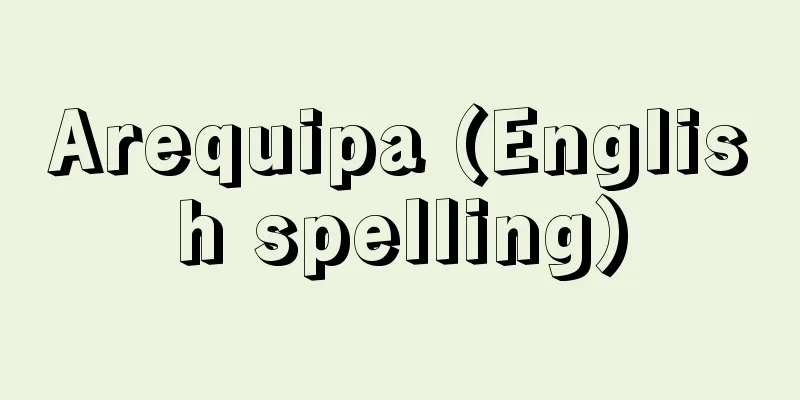Bungo Channel

|
The sea area that separates Bungo in Kyushu from Iyo in Shikoku. The northern entrance is Hayasui Seto (Hoyo Strait) between Sadasaki in Ehime Prefecture and Sekizaki in Oita Prefecture, and the southern entrance is between Koumo Cape in Ehime Prefecture and Tsurumizaki in Oita Prefecture, and is about 50 kilometers east to west and 40 kilometers north to south. It is generally deep, 80 to 90 meters in the center, and over 300 meters in the deep depression to the southeast of Hayasui Seto. Both banks are where the Shikoku Mountains and Kyushu Mountains end, and form a typical ria coast, with capes and coves alternating, and islands such as Hiburi Island and To Island on the east side, and Takashima Island, Muku Island, Hoto Island, Onyu Island, and Oshima Island on the west side. Deep in the cove are the developed cities of Yawatahama and Uwajima on the east side, and Usuki, Tsukumi, and Saiki on the west side. The area is rich in open sea fish such as tuna, swordfish, bonito, sardines, horse mackerel, and mackerel, inland sea fish such as sea bream, flounder, squid, and shrimp, and other marine animals, making the fishing industry thriving. Pearl, mother-of-pearl, and yellowtail farming is also thriving in the cove. As for agriculture, the main activities are rice cultivation, citrus fruit cultivation, and cattle and pig raising. [Shunichi Kaneko] "Bungo Channel Region: Nature, Society, and Education" (1980), edited and published by the Faculty of Education, Oita University Source: Shogakukan Encyclopedia Nipponica About Encyclopedia Nipponica Information | Legend |
|
九州の豊後と四国の伊予を分かつ海域。北口は愛媛県佐田岬と大分県関崎(せきざき)の間の速吸瀬戸(はやすいせと)(豊予(ほうよ)海峡)、南口は愛媛県高茂(こうも)岬と大分県鶴御(つるみ)崎の間で、東西約50キロメートル、南北約40キロメートル。一般に深く、中央部で80~90メートル、速吸瀬戸南東方の海釜(かいふ)(深い窪地)は300メートルを超える。両岸は四国山地と九州山地が終わる所で、典型的なリアス式海岸をなし、岬と入り江が交互するなかに、東側に日振(ひぶり)島、戸(と)島、西側に高島、無垢(むく)島、保戸(ほと)島、大入(おおにゅう)島、大島などの島々がある。入り江の奥には、東側に八幡浜(やわたはま)、宇和島(うわじま)、西側に臼杵(うすき)、津久見(つくみ)、佐伯(さいき)などの都市が発達している。マグロ、カジキ、カツオ、イワシ、アジ、サバなどの外海性魚類、タイ、カレイ、ヒラメ、イカ、エビなどの内海性魚類、その他の水産動物が豊富で、水産業が盛んである。入り江では真珠、真珠母貝、ブリの養殖も盛ん。農業は、米作のほか、柑橘(かんきつ)類栽培、牛・豚飼育が主である。 [兼子俊一] 『大分大学教育学部編・刊『豊後水道域――自然・社会・教育』(1980)』 出典 小学館 日本大百科全書(ニッポニカ)日本大百科全書(ニッポニカ)について 情報 | 凡例 |
>>: Provincial law - Bunkoku law
Recommend
junior school (English spelling)
…Influenced by the Froebelianism introduced in th...
Toyuk Caves - Toyuk Caves
A Buddhist cave temple in Shanshan County, Xinjian...
Prosopis glandulosa (English spelling) Prosopisglandulosa
...(2) In addition to the suppression of transpir...
Intermediate Value Theorem
This is a theorem that for a continuous function f...
Ludianar
A city in northwest India, near the south bank of ...
Funahashi [village] - Funahashi
A village in Nakaniikawa County, central Toyama Pr...
Schizophrenia
A type of mental illness. In 2002, the name was ch...
Orgelpunkt (English spelling) (German) Orgelpunkt
In music, the lowest voice holds the same note for...
Paricutin [mountain] - Paricutin
An active volcano located in central Mexico, about...
Itokoku - Itokoku
A country in the Yayoi period that is identified ...
Development Assistance Group
...The predecessor of the DAC was the Development...
Tarzan
The protagonist created by American author Edgar ...
Okigera - Okigera
…A word derived from the English word galley. The...
Alfred Hill
...The band visited Japan several times between 1...
Dipodidae
…A general term for mammals of the Dipodidae fami...









